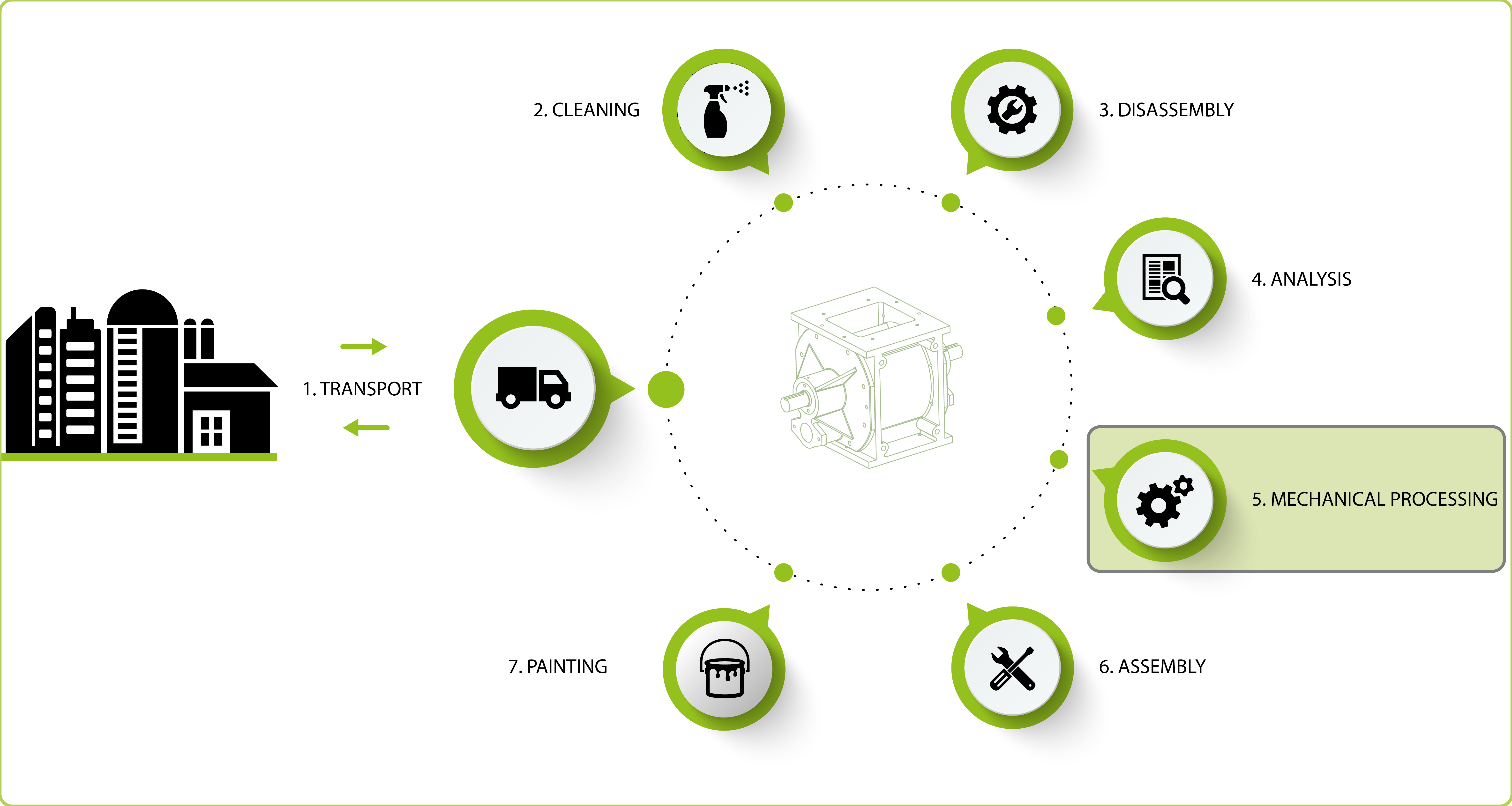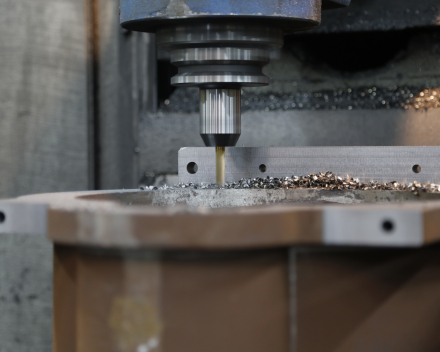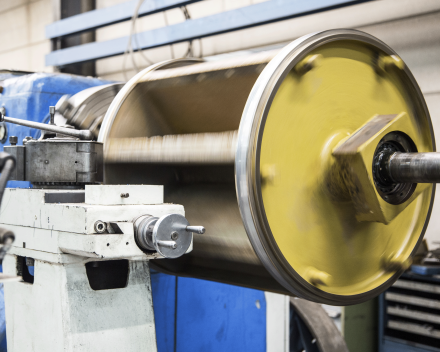- Home
- Newsletter
- August 2024 | Rebuild from A to Z: the machining
August 2024 | Rebuild from A to Z: the machining
05/07/2024 - 09:37

To refurbish a valve, four mechanical operations are required: milling, turning, boring, and welding. Each operation has its own specific challenges. Read more about the machining in this newsletter.
Machining refers to the process of removing material to form or work on sluice components according to specific dimensions. Machining affects the degree of clearance between moving parts as it determines how accurately parts are machined to the required tolerances. Too much clearance can lead to unwanted movement or inefficiency, while too little clearance can result in friction, wear, or parts seizing.
In a rotary valve, clearance refers to the space between the rotor and the housing of the valve. Tolerances, on the other hand, indicate the acceptable variations in dimensions for a component to fit or function properly within a system.
The magnitude of the total tolerance is determined by the dimensional accuracy of each component:
- How flat are the two flanges (turning)
- How parallel are the two flange surfaces on the stator (milling)
- How perpendicular is the bore of the stator to the stop surfaces (milling, boring)
- How oval is the bore of the stator (boring)
- How tapered is the bore of the stator (boring)
- How oval is the diameter of the rotor (turning)
- How tapered is the diameter of the rotor (turning)
- How parallel are the side surfaces of the rotor (turning)
Ideally, there should be no clearance between the rotor and the housing. The less tolerance there is on the clearance, the closer we can get to a theoretically ideal zero clearance.
In summary, machining and clearance are both essential concepts in the design, manufacturing, and maintenance of mechanical systems such as rotary valves. Precisely managing machining processes and verifying tolerances are crucial to achieving the desired clearance for optimal system operation.



